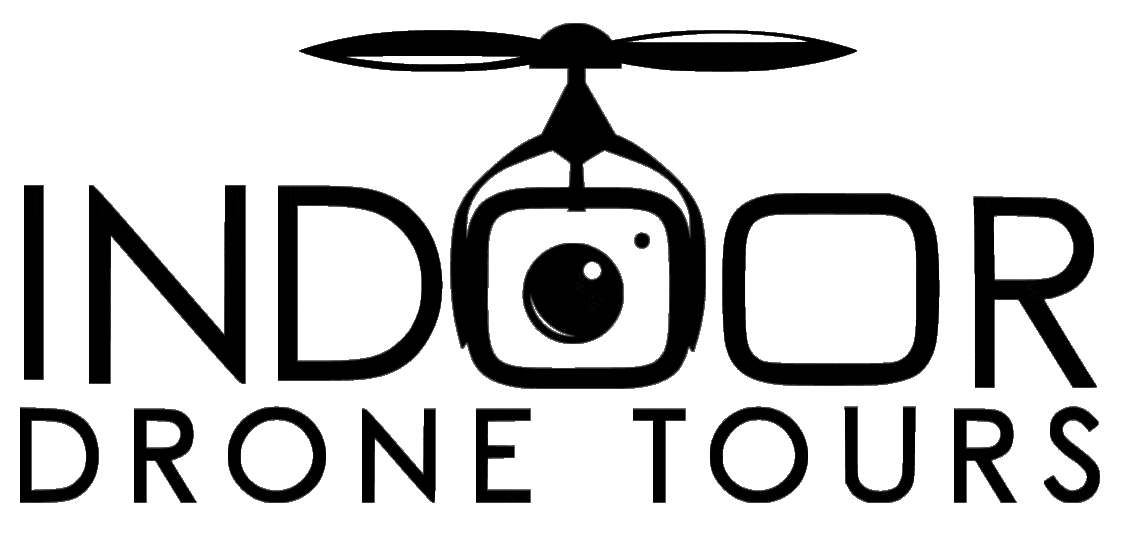Soaring Solutions: A Comprehensive Guide to Construction Drone Services
Author: Indoor Drone Tours
Posted 28 Mar 2024Let’s kick things off by establishing a clear picture of what construction drone services are. These are not your average gadgets. Construction drones are sophisticated, remotely operated unmanned aircraft armed with cutting-edge technology tailored to streamline various operations on construction sites.
These little wonders do it all ; snapping breathtaking aerial shots for project updates and flashy promotional content, crafting detailed 3D models and maps to help plan and track progress, and even zipping into tight spots to spot potential problems and measure progress accurately.
In this guide, Indoor Drone Tours will provide a comprehensive guide on leveraging drones for construction services. As a premier drone photography and tour company, we specialize in creating effective Before & After videos, Project Recaps, and Development Tours using indoor and outdoor drones.
Learn More About Indoor Drone Tours Construction Drone Services Today!
Evolution of Drones in Construction

The evolution of drones in construction is nothing short of remarkable. From their initial utilization of aerial photography to their current role as integral components of construction workflows, drones have undergone a transformative journey.
Drones have caused radical changes in the construction industry, transitioning it from ground-based methods for tasks like surveying and inspection to a faster, safer, and more cost-effective approach. Initially, drones were limited to aerial photography, but now there are over 396,528 registered drones in the US and they boast enhanced capabilities like 3D modeling and thermal imaging, thanks to advancements in technology and regulations.
Construction companies can now seamlessly integrate drones into their workflows which has allowed them to significantly enhance efficiency, reduce risk, and facilitate data-driven decision-making. There is so much more that we have to look forward to as we look ahead. The future of drones in construction promises even greater advancements in autonomy, artificial intelligence, and sensor technology, paving the way for more innovative applications.
The evolution of drones from novelties to indispensable assets in the construction drone software and services toolkit. Today the market for construction drones is valued at $6.9 billion.
Benefits of Utilizing Drones in Construction
Construction sites are a beehive of activity, which also makes them inherently risky. Thankfully, drone technology is taking safety to new heights. Let’s explore some of the key benefits drones offer to construction drone services:
Improved Safety Measures
Drones can be your eyes in the sky. This effectively eliminates the need for workers to climb precarious structures or enter hazardous areas. Statistically, this translates to far fewer safety risks and a more secure work environment for everyone. Imagine inspecting a towering wind turbine or a near-complete skyscraper – tasks that are now much safer if done by a drone than a human.
Enhanced Efficiency and Productivity
If you think about it, drones are time machines in disguise. They can capture data and imagery of vast areas in a fraction of the time traditional methods take. Now imagine trying to survey a sprawling construction site or monitoring progress on a complex excavation project all on your own, on foot. Not anymore, drones get the job done quickly and efficiently, freeing up valuable time for construction workers to focus on other tasks.
Cost Savings
Because of how efficient drones are with the use of drone footage to video capture the construction progress amongst other things, the positive effects can be observed even in not just time, but cost savings as well. Drones are so efficient at saving time that those gains can translate to significant cost savings . With aerial drone imagery and drone construction photography, you can expect more streamlined efforts that lead to reduced labor hours, faster data collection, and the ability to identify and address potential issues early on. All these can contribute to a healthier project budget.
For example, drones can help catch minor foundation flaws before construction progresses, saving the cost of extensive rework later. on finished project
Precision in Data Collection
Drones are excellent at data acquisition. Certified drone pilots can gather highly accurate aerial photographs of an entire site, video footage of ground control points, and even 3D point cloud data. This translates into precise measurements, detailed progress reports, and a clear picture of the entire construction site. Imagine having a real-time, digital replica of your project for better planning and informed decision-making. That’s what these unmanned aerial vehicles offer.
The process of learning to operate a drone for these types of aerial imaging services is not easy. However, that is not something that you will have to worry about. Indoor Drone Tours’ custom-built drones are flown by FAA 107-certified and licensed drone pilots. No matter the size of the construction space, we can provide seamless point-of-view construction drone services.
Contact Indoor Drone Tours Today!
Types of Drones Used in Construction
In an ideal world project managers could leave it all to a singular drone and a singular drone pilot and then walk away. However, the world of construction drones is not a one-size-fits-all situation with cookie-cutter solutions. Just like choosing the right tool for the job, selecting the appropriate drone depends on the specific task at hand and the person certified to fly it. Let’s take a closer look at three common types of drones used in construction drone services:
Fixed-Wing Drones
Fixed-wing drones resemble miniature airplanes and are adept at enduring long flights. This is what typically makes them invaluable for large-scale site mapping, surveying, and progress tracking in construction projects. Construction companies find that these tiny airplane-like structures are capable of capturing high-resolution overviews of expansive areas in a single flight. Fixed-wing drones also provide a comprehensive visual timeline of project development which helps construction professionals facilitate effective communication among stakeholders and enhance project management processes.
Multi-Rotor Drones
Multi-rotor drones on the other hand are more similar in appearance to helicopters with multiple rotors. These types of drones serve as the backbone of the construction drone sector and are renowned for their exceptional maneuverability and vertical takeoff and landing capabilities. Multi-rotor drones specialize in close-up inspections and site analysis, offering high-resolution aerial imagery and video for thorough examinations of specific structures or areas.
They also excel in navigating confined spaces, effortlessly maneuvering through tight corners and complex environments where conventional methods may not be so great or safe. These features are sure to prove how indispensable multi-rotor drones are in construction projects when detailed assessments and exploration of intricate spaces are needed.
Hybrid Drones
Hybrid drones are the best of both worlds as they merge the endurance of fixed-wing models with the agility of multi-rotor drones and in the combined efforts, offer versatility for various tasks. They excel in long-distance inspections as they can efficiently cover extensive areas such as pipelines or wind farms while retaining the capability to hover for detailed examination when necessary. Even in the cases of emergency scenarios like search and rescue operations, hybrid drones prove invaluable, swiftly surveying large regions to identify hazards or locate missing individuals. The types of drones are highly adaptable and can be used across a spectrum of applications in construction drone services.
Applications of Drones in Construction
So now that we’ve covered the various types of drones and the benefits they bring. It’s time to look at the drone maps and their actual uses in depth across all the possible construction drone services and construction projects.
Site Surveying and Mapping
Gone are the days of laborious ground-based surveys. Drones can map a construction site quickly and accurately while capturing every nook and cranny with high-resolution drone imagery. This data is then used to create 3D models which are essential for planning, excavation, and foundation work. Imagine having a precise digital replica of your site before laying the first brick!
Progress Monitoring and Documentation
Keeping track of a construction project’s progress can be a challenge if the construction manager has to rely solely on physical labor. Drones can provide a bird’s-eye view that allows drone pilots to capture images and videos of each site. This visual documentation helps monitor progress, identify potential delays, and ensure everything stays on track. Imagine now being able to create time-lapse videos of your project’s impressive development with mapping drones.
Check out this before-and-after video our expert team Indoor Drone Tours did for Redmond Construction.
Inspection and Maintenance
Construction sites are full of hard-to-reach areas. These construction site drones can be your eyes in the sky as they perform detailed aerial photos and inspections of roofs, wind turbines, or complex facades. They can also be used to identify potential problems like cracks, leaks, or structural issues, all from a safe distance. You’ll be able to spot a minor defect in a high-rise window before it becomes a major headache.
Check out this progress drone video Indoor Drone Tours did for Stone Arch.
Environmental Monitoring
Construction can have an impact on the surrounding environment, whether you plan for it or not. Smart construction managers plan for it and use drones equipped with specialized sensors to monitor air quality, and noise levels, and even track wildlife activity. This data helps ensure compliance with environmental regulations and promotes sustainable construction practices. It’s smart to use drones to minimize your project’s footprint and be a responsible steward of the environment.
Integration of Drones with Building Information Modeling (BIM)
Drones and Building Information Modeling (BIM) is a match made in construction heaven. When these two powerful tools are used together, the results are nothing short of impressive. Research shows that drones and BIM are a powerful duo that transform construction from a reactive to a proactive industry. By leveraging this integration, you can build smarter, not just harder, ensuring a successful project from concept to completion.
Enhancing BIM Accuracy with Drone Data
BIM models are the digital blueprints of a construction project. Drones can act as high-tech data collectors, feeding real-time progress in-world information into the BIM model. Here’s how it works:
- 3D Modeling from Drone Data: Data captured by drones, like high-resolution images and LiDAR scans , can be used to create incredibly detailed 3D models of the construction site. These models can then be seamlessly integrated into the BIM software, providing a more accurate and up-to-date digital representation of the project.
- Improved Site Progress Tracking: Regular drone flights can capture the ever-evolving construction site. This data can be used to update the BIM model in real time, allowing project managers to track progress with exceptional accuracy. You can now have a constantly evolving digital twin of your project, reflecting every stage of construction.
Streamlining Collaboration Among Stakeholders
BIM acts as a central hub for all project information in construction drone services. Integrating drone data into BIM creates a shared platform accessible to everyone involved in the construction process. This fosters smoother collaboration:
- Real-Time Visibility for Stakeholders: Architects, engineers, contractors, and anyone else involved in site planning can access the BIM model with the latest drone data. This allows for better decision-making, improved communication, and faster identification of potential issues. Now everyone will be on the same page with a clear, up-to-date picture of the project.
- Enhanced Coordination and Conflict Resolution: By having a single source of truth – the BIM model enriched with drone data – potential clashes between different building elements can be identified and addressed early on. This saves time, reduces rework costs, and ensures everyone is building from the same blueprint (literally and figuratively).
Summary: Harnessing the Power of Drones for Construction Excellence
By harnessing the power of drones, construction firms and their prospective clients can elevate their capabilities, perform tasks, optimize project outcomes, and lead the way toward a more efficient and sustainable built environment. That’s a significant competitive edge that Indoor Drone Tour can provide with our drone technology custom-built to cater to construction drone services.
Don’t be dissuaded because of our name, we’re experts in outdoor aerial drones, and the majority of our clients opt for outdoor flights to elevate their tours from land to air.
Book A Construction Drone Flight Today!

